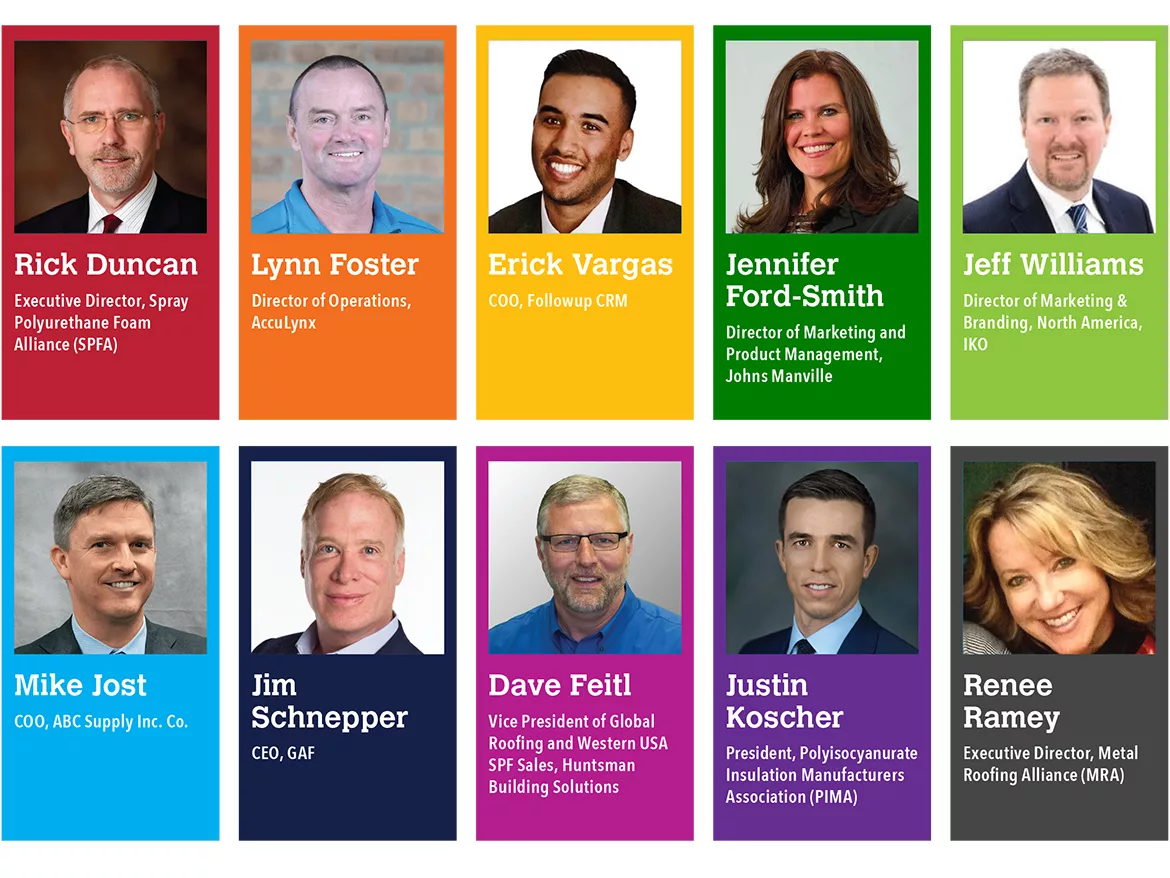RC Q&A: ARMA GEARS UP FOR ACTIVE 2022

Editor’s Note: Gauging the pulse of the roofing industry annually continues to be a challenge as roofers adapt to rapidly changing marketplace. In addition to the survey circulated last fall that laid the foundation for the 2022 Roofing Report, RC also sought out the opinions of leaders from all segments of the industry.
As part of RC’s continuing coverage, here’s what Reed Hitchcock, executive vice president of the Asphalt Roofing Manufacturers Assocation, shared with us.
RC: How would you assess the state of roofing in 2022?
RBH: Despite the global pandemic, the roofing industry is thriving, and I am glad to be a part of it. With the unprecedented change in work/lifestyle, there is a new perspective on where we work, where we live, and investing in those structures. In 2021 we trended toward record level asphalt shingle shipments and overall increases in low-slope asphaltic materials. We are optimistic about 2022, given the continued strength of the residential housing market and continuation of alternative work arrangements. That said, there does remain some question around commercial real estate, and while we have seen some growth over the past couple of years, the hope is that building owners will invest in their properties and also address some deferred maintenance from the pandemic.
RC: What did your members learn after a year dominated by supply shortages, and are there any changes underway?
RBH: We still see some raw material shortages and bottlenecks in transportation and hope that those subside as we get further into the year.
Project planning and communication through the chain are key. Practices like “ghost” ordering of materials only exacerbate the supply issues and confuse the process. Our members are in as close communication with their customers as they have ever been, and that can only be a positive for the industry. They are also in frequent communication with their raw material suppliers, but unfortunately there remain some issues beyond everyone’s control – such as processing of shipments at the ports and trucking shortages.
RC: Were there any ways ARMA helped members reach or assist contractors with their concerns over supply lines?
RBH: ARMA members are in regular communication with their customers and work hard to keep them informed of any supply or other challenges. ARMA has been especially active in keeping our members informed of developments related to the ongoing COVID-19 situation and how new rules, regulations, and guidelines may affect their companies. We are also among a group of industry organizations sponsoring the quarterly Industry Market Index Survey for Reroofing that aims to inform contractors about the markets and the industry on a regional basis. Several ARMA members have participated in industry educational programs related to material supply, such as the NRCA Town Hall program last fall. No doubt manufacturers of all types of roofing materials are looking closely at supply chains into their facilities and exploring how to minimize slowdowns in production and shipping.
RC: This year’s survey data showed continued optimism as sales projections for the next few years trended positively for asphalt in both residential and commercial sectors. What trends are you seeing and how can roofing contractors capitalize?
RBH: We are hearing the same, and we’re obviously excited! As mentioned above, we are seeing homeowners investing in new homes and renovating existing properties as they have spent more time than ever in the home over the past two years, and we don’t see any current signs of that trend slowing down, particularly as interest rates remain low and equity available. We continue to see strong performance in institutional low-slope projects, where asphalt is very often the material of choice, and as many businesses have returned to some degree of “in person” work, we are seeing more reroofing jobs on the commercial side and expect that to continue to increase as more businesses return to “normal”.
RC: Have you seen any progress in the workforce shortage in roofing, and what encourages/discourages you about the current approach?
RBH: It remains a challenge. We hear a lot about material shortages, but labor shortage is as big an issue if not bigger, and as supply chains normalize we will go back to labor being the biggest challenge facing the roofing industry. I am optimistic about the increase in focus in some sectors on educating young people about roofing as a viable and lucrative long-term career, both on the roof and in the office, but the truth is that even with materials available there are many areas where worker shortages are behind the backlogs. We have a long road ahead of us as an industry to build our workforce, and we need to continue to work together as a whole industry to inform and educate the individuals and those who can help from the outside.
I look forward to the next Roofing Day program on April 5-6 and encourage contractors, manufacturers, and anyone else who makes a living from the roofing industry to participate in educating our lawmakers about our industry and what type of support we need from them to ensure that everyone has a roof over their head.
RC: What are you proudest of from your group, and your member organizations as the industry moves through certainly challenging times?
RBH: I am proud that ARMA as an organization continues to deliver its member companies with timely, pertinent information to assist in the day-to-day operation of their businesses, while continuing to develop technical and other materials for contractors and consumers alike to make informed decisions about the roofing materials they choose. I am proud that, despite the challenges of the pandemic, our members have swiftly adapted to challenges and continue to develop new means to ensure that their customers get quality roofing materials. I am also proud that the roofing contractor and manufacturer trade associations have worked together more effectively over the past two years than ever before. We have pulled together to communicate and educate on issues of concern to the entire industry about COVID, supply, and worker shortages as well as ongoing interactions on building codes and legislative advocacy: a true testament to the spirit of partnership and collaboration that we can come together in the interest of the entire industry and the general public when we need to.
Looking for a reprint of this article?
From high-res PDFs to custom plaques, order your copy today!





